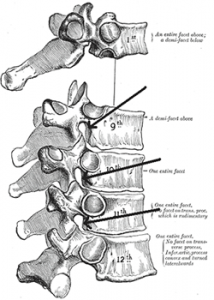Cervical Spine Disc Construction
The spinal disc consists of 23 discs in total and there are six cervical discs in them. Each of these cervical discs is held between the cervical vertebrae. The main function of these discs is to handle most of the stress on the neck and they also function as the shock absorber in the cervical column of the spinal cord. The cervical spine anatomy comprises of cervical discs that contain collagen and ligaments and there exterior is made of tough material that is called annulus fibrosus and the interior is made of nucleus pulposus which is a soft jelly like material.
Functions of Cervical Spine Discs
The main and most important function of cervical spine discs is to allow the neck its maximum possible flexibility. These discs are also responsible for different movements of the neck and they allow the neck to handle much of its stress. These discs work as shock absorber in the cervical spine. Moreover, they also work in holding the cervical vertebrae together. The soft core of these discs as well as tough exterior work as the major carrier of the body’s axial load and that is why they need to be well hydrated to be able to maintain their softness and strength.
 Cervical Degenerative Disc Disease
Cervical Degenerative Disc Disease
Cervical degeneration is a common enough phenomenon that happens with advancing age. As human body grows older, the cervical spine discs become dehydrated which make them stiff and as a result they become less flexible in adjusting to compression and pressure. This type of degeneration leads to the inner core of these discs pressing to the outer core and then coming in contact with the nerve roots. This condition is known as degenerative disc disease or herniated cervical disc. Cervical treatment for this type of condition is usually conservative like physical therapy, medications as well as back strengthening exercises.



